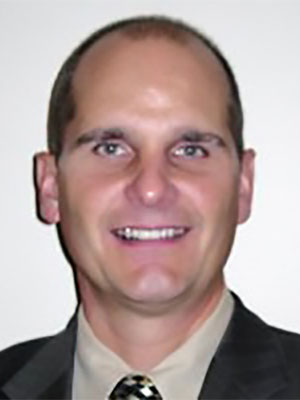District Attorney Vince Biskupic never revealed how police helped his witness. But she finally did — more than 20 years after the fact.
This story was produced by Wisconsin Watch, a nonprofit, nonpartisan investigative reporting organization that focuses on government integrity and quality of life issues in Wisconsin.

- Download this story as a Word document
- Download the photos that accompany this story
- View the original story at WisconsinWatch.org
By Phoebe Petrovic and Dee J. Hall
Wisconsin Watch and WPR
This is the fourth installment of Open and Shut, a seven-part podcast and online series investigating the virtually unchecked power of prosecutors. See the entire project at wpr.org/openandshut
Sarah Liebzeit’s son started using marijuana when he was about 12. And as a young teenager growing up in Wisconsin’s Fox Valley, he got into alcohol and other drugs.
“He turned to sniffing gas,” Liebzeit recalls. “I tried to have Outagamie County commit him for sniffing gas, and was basically told it’s not an illegal substance. There was no help for him.”
When Jonathan was around 15, he and a friend were huffing gas in his dad’s garage. They were messing around with a gun owned by Jonathan’s dad, Ed.
“I don’t know if they were playing Russian Roulette or what, and his friend actually shot himself in the head, but the bullet traveled along his skull and came out the top,” Liebzeit says.
The friend survived. But that episode of mindless risk-taking was a prelude for something much, much worse. In 1996 — when he had just turned 19 — Jonathan Liebzeit took part in a homicide.
Liebzeit and two other young men used a bat to beat another young man, Alex Schaffer, at a park in Kaukauna, Wisconsin. Then the other two men drowned Schaffer in a drainage ditch. Jonathan Liebzeit was sentenced to life in prison without the possibility of parole.
“It just was so horrible and unbelievable,” Sarah Liebzeit recalls. “And I knew that there was never any intention to kill Alex. They went to beat him up over silliness. I knew he (Jonathan) deserved to be punished, but not to die in prison.”
In 2019, Wisconsin Watch received a tip about Liebzeit’s case. It alleged that the prosecutor, Outagamie County District Attorney Vince Biskupic, had withheld information about a key witness — a young woman who got some help, monetary and otherwise, from the police.
That assistance was never disclosed to the defense. It’s part of a pattern seen in some other high-profile cases prosecuted by Biskupic, according to an investigation by Wisconsin Watch and WPR.
Wisconsin Watch and WPR sent registered letters with lists of questions and left phone messages and emails for Biskupic, who is now an Outagamie County Circuit judge, and his attorney. They did not respond.
The case raises thorny questions about whether the rules of fairness in the justice system always apply — even when the crime is horrific and the defendant far from innocent.
Night of drinking ends in death
On the evening of Oct. 26, 1996, Jonathan Liebzeit and his friend, Dan Mischler went to Liebzeit’s father’s house where they met up with a third man, James Thompson, who was renting a room there.
Liebzeit says he told Mischler that Schaffer was going to come over. According to Liebzeit, Mischler told him he “hated” Schaffer because he owed him money. Liebzeit, Thompson and Mischler are all white. Some records identify Schaffer as Native American.
According to statements given to police, Liebzeit and Thompson were drinking and talking about beating up Schaffer. Liebzeit insists the idea was always to scare him — not kill him.
Liebzeit describes Schaffer as a “friend” but says his friends would sometimes “beat each other up” when one of them was “screwing up.” He describes it as “some weird ‘Lord of the Flies’ thing” that today he knows “clearly, it was wrong.”
Ed Liebzeit, Jonathan’s father, had several renters living at his place, including a young woman, Jayme Bowman, who was hanging out with the guys and heard some of what they were saying. Schaffer showed up around midnight. They had more to drink. Liebzeit says he probably drank more than 12 beers. “I mean, I was pretty drunk.”
And then Thompson, Mischler, Liebzeit and Schaffer all headed to the woods in Horseshoe Park, just across the street. They told Schaffer they were going to smoke some weed. It was, Liebzeit admits, an “ambush.”
The men went into a drainage tunnel and began attacking Schaffer, taking turns beating him with a bat. Liebzeit admits he hit Schaffer multiple times, including one blow to the head that was “pretty hard.”
Schaffer stumbled out of the tunnel where the beating continued, then, police reports say, Thompson and Mischler held Schaffer’s head under the water for a couple of minutes. They put his body back in the tunnel and left.
At trial, two experts testified that the multiple blows to the head likely would have killed Schaffer — but the immediate cause of death was drowning.
Different stories emerge
A day later, Bowman — the young woman living at Ed Liebzeit’s house — turned them in.
Police heard different versions of what happened from Liebzeit, Thompson and Mischler. Mischler provided valuable information to investigators and testified against Liebzeit and Thompson. In exchange, Biskupic, the prosecutor, offered him “use immunity,” meaning Mischler’s own testimony couldn’t be used against him in court.
Liebzeit and Thompson were found guilty of first-degree intentional homicide and hiding a corpse. They were sentenced to life without parole. Mischler — one of the two men who held Schaffer’s head underwater — ultimately pleaded no contest to second-degree intentional homicide. He was sentenced to 20 years and was released in 2009.
The tip Wisconsin Watch received had to do with Bowman. During the investigation, Bowman gave several statements to the police. Wisconsin Watch was not able to obtain all of them, but in those reviewed, Bowman never claimed she overheard Thompson and Liebzeit discussing “killing” Schaffer. Instead, she said Liebzeit and Thompson had talked about “beating up” Schaffer.
Adds Liebzeit: “And then when she came to testify at trial, she said we talked about killing Alex.”
That is a huge difference under the law. Bowman’s trial testimony showed evidence of intent to kill — that’s the standard for proving intentional homicide. Her earlier statements did not.
The difference between her statement to police and trial testimony, Liebzeit says, is that rather than intentional homicide, which carries a life sentence, he might have been charged with reckless homicide, with a shorter sentence and a chance for parole — instead of dying in prison.
Liebzeit’s trial attorney asked Bowman why she hadn’t mentioned the word “kill” in her first statement to police. She gave a few reasons: She was nervous, and she only remembered some of the details later.
But there’s something the jury didn’t know. In 2019 — over two decades after she testified — Bowman signed an affidavit saying the police had helped her out during the investigation.
After giving a statement to Kaukauna Police, Bowman wrote, members of the department got her a hotel room, where she stayed for about two weeks, likely paid a security deposit on a new apartment and helped her get rehired after losing her job due to involvement in the investigation.
Liebzeit believes that had this information been known at the time of trial, his attorney could have more effectively cross-examined Bowman on her inconsistent statements.
Discovery rule ‘absolutely’ violated
But Liebzeit’s defense attorney didn’t know that police had helped Bowman during the investigation, because Biskupic didn’t disclose that information, says Kevin Musolf, who represented Liebzeit at trial.
“That would have made a big difference because it would have attacked her credibility,” Musolf says.
“If I knew this back then,” Musolf says, he would have argued to the jury “that either the police told her, ‘Look, we need you to say that they said they wanted to kill him, okay?’ And if the police didn’t tell her to say that, she certainly got that impression because they’re giving her all this stuff.”
Musolf was asked whether that action was a violation of the Brady rule, which requires prosecutors to turn over evidence that raises doubt about a defendant’s guilt before trial. His opinion: “Yes, absolutely.”
Bowman declined to be interviewed but sent a statement insisting that her testimony did not change and that she told the truth under oath.
“The murder has caused over 25 years of emotions, disappointment, depression, anxiety, fear, torture, challenges, counseling, successes, failures, tears, Post Traumatic Stress, forgiveness, and shame,” she wrote.
Bowman wrote that said she overheard Liebzeit and Thompson make several comments about beating up and killing Schaffer. But she wrote, when people say, “I’m gonna kill him,” they don’t always mean that literally. So she didn’t take that threat seriously at the time.
Bowman said Liebziet tried several times to get her to come with them to Horseshoe Park, telling her she could look away or close her eyes when they did the actual killing. She said Liebzeit and Thompson were laughing and joking when they returned to the house. She wrote, “One of them said ‘the little f— wouldn’t die.’ ”
Bowman said she told the truth when she testified in court. And she wanted to be clear — she does not feel she got any “favors” from the police.
“If Jonathan, James, and Daniel didn’t murder Alex, then I would have continued to have a safe place to stay,” she wrote. “Instead, the home became a crime scene.”
In an email accompanying her note, Bowman added, “Jonathan is guilty of murder and the district attorney and/or Kaukauna police did nothing wrong. If you use any or all of my statement, know that I agree with the decision the jury made.”
‘Classic motive and bias evidence’
Legal scholars contacted by Wisconsin Watch and WPR agree Kaukauna police did not break the law by helping Bowman find a safe place to live after she turned in Liebzeit and his friends for murder. But while police didn’t do anything wrong, legal scholars also agree — the prosecutor, Outagamie County District Attorney Vince Biskupic, did.
One of them is Georgetown University law professor Abbe Smith. She calls the lack of disclosure about the assistance to Bowman an “outrage.”
“They need to disclose — period,” Smith says. “You’ve got a witness who apparently, according to your account, changed her testimony along the way during a time when she’s receiving benefits from the police — a defense lawyer gets to cross-examine on that.”
Smith says the defense had the right to know that police had paid for a hotel during the investigation, helped her pay a security deposit on a new apartment and talked to her employer to get her job back — and the fact that after Bowman received this help, her statements changed.
Smith calls it “classic motive and bias evidence.”
In 2017, Jonathan Liebzeit filed a motion asking for a new trial based, among other things, on his lawyer’s failure to investigate the “financial incentives” Bowman received. The motion was denied. Liebzeit appealed, but the appeal was rejected. And Liebzeit’s sentence of life without the possibility of parole stood.
Fairness — but for whom?
Jonathan Liebzeit is now 44. His mom, Sarah, says he has spent the past 25 years educating himself. He’s taken up painting and pottery.
But other things can happen when you grow up in prison without the possibility of getting out. Liebzeit has become a follower of Odinism — a type of pagan religion associated with white supremacists. The man who killed 77 people in Norway back in 2011 was an Odinist.
Liebzeit says the religion “just really spoke to me and I was kind of drawn to the, I guess, codes of conduct.”
The National Gang Crime Research Center reported in 2004 that Odinists were among the most common “white racist extremist” groups proselytizing in American prisons. But Liebzeit insists he is no white supremacist. “I’m not a bad person,” he says. “I don’t hate anybody.”
Liebzeit adds, “Does it matter if people are good or bad, whether or not the United States government, the state government, trampled people’s rights? Does that matter if they’re good or bad people? The Constitution and all that, like, it protects everybody, regardless of what you do. The government is supposed to follow those rules.”
Smith agrees. She argues protections in the legal system need to be tested on the hard cases, the brutal cases — like Jonathan Liebzeit’s.
“It can’t just be for our kids when they get arrested shoplifting in CVS,” she says. “It can’t be that those are the only cases in which we care about fairness. We have to test ourselves with the worst cases.”
“And if we don’t do it in those cases, well then we’re not really doing it at all. We need to all feel secure that when somebody is convicted for a really terrible crime, they’re rightly and fairly convicted.”
There’s a coda to Liebzeit’s case. In 2020, a judge agreed to reopen his case and re-sentence him. The decision came not from any problems with Biskupic’s prosecution but a new factor based on advances in neuroscience.
The judge said had he known then how long it takes for adolescent brains to develop — especially if they’re affected by drug abuse like Liebzeit’s — he would’ve sentenced him differently. The judge made Liebzeit eligible for parole. The state is appealing that decision.
In the next episode of Open and Shut, we examine a murder case prosecuted by Biskupic in which a taped “confession” mysteriously was erased, blood-red stains found on the defendant had no DNA in them — and the defendant’s girlfriend was wrongfully prosecuted for something that’s not even a crime.
To hear the related podcast, go to Open and Shut (wpr.org/openandshut) or wherever you get your podcasts. The nonprofit Wisconsin Watch collaborates with WPR and other news media and the University of Wisconsin-Madison School of Journalism and Mass Communication. All works created, published, posted or disseminated by Wisconsin Watch do not necessarily reflect the views or opinions of UW-Madison or any of its affiliates. This story is a collaboration between Wisconsin Watch and WPR as part of the NEW News Lab, a consortium of six news outlets covering northeastern Wisconsin.



